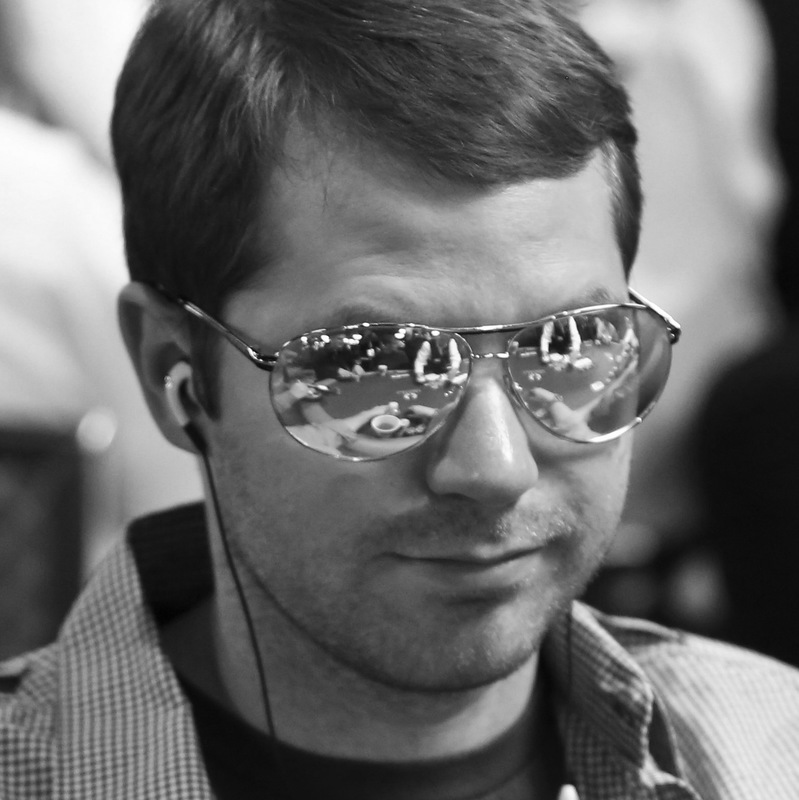

Being a professional for the poker hand sharing app Share My Pair, I'VE the chance to check numerous hands submitted by the app’s users. This hand from a small-stakes tournament clearly illustrates the most important concept you have to master if you wish to succeed at poker.
With blinds at 200-400 with a 25 ante, the player in first position (under the gun) called the blind. The players in second and third position also known as. The action folded to the hijack who called, as did the cutoff. The Hero, with A 3
3 with a 15,000-effective stack, decided to name 200 more from the small blind. The large blind checked.
with a 15,000-effective stack, decided to name 200 more from the small blind. The large blind checked.
Calling on this situation is the most suitable choice unless the initial limper is understood to be incredibly weak. If he's weak, he'll be highly more likely to fold to a pot-sized raise to 3,600 or so. Notice that the opposite limpers won't cause an excessive amount of concern because most players raise limpers with their best hands, meaning that once they simply call, they are going to usually not have strong hands. While raising may steal the pot without a contest, limping is an affordable strategy to see the flop with a decently strong hand that flops well.
The flop came A K
K 7
7 , giving Hero top pair with a foul kicker, plus a backdoor flush draw. Everyone, including Hero, checked to the player in third position who bet 1,300 into the 3,025 pot. The hijack called and the cutoff folded. Hero decided to name. Everyone else folded.
, giving Hero top pair with a foul kicker, plus a backdoor flush draw. Everyone, including Hero, checked to the player in third position who bet 1,300 into the 3,025 pot. The hijack called and the cutoff folded. Hero decided to name. Everyone else folded.
I like Hero’s initial flop check. Leading is purely really helpful if his opponents are blatant calling stations who will stick around with every kind of junk. When facing a gamble and a call, I DON'T like several of Hero’s options. If he folds, he's folding a tight hand that would easily be best. If he calls and demanding money goes within the pot at the turn or river, Hero’s top pair is sort of always behind. Hero shouldn't raise the flop bet because he'll only get called when he's crushed. When faced with numerous marginal options, it's also wise to take the one who makes it difficult so that you can lose a big pot, especially when you find yourself out of position. For this reason, I'D have folded. If you wish to win at poker, you have to discover ways to think ahead about how the remainder of the hand is probably going to play out. It's almost a be sure that no less than yet another bet will go into this pot. Seeing how Hero doesn’t need to put extra money within the pot, he should make the snug play and fold.
The turn was the 10 , giving Hero a flush attract addition to his weak top pair. Hero checked, the player in third position bet 2,500 into the 6,925 pot, and the hijack called. Hero decided to name as well.
, giving Hero a flush attract addition to his weak top pair. Hero checked, the player in third position bet 2,500 into the 6,925 pot, and the hijack called. Hero decided to name as well.
While Hero’s decision at the flop was close, he simply must continue at the turn. Calling is my preferred option because Hero is getting acceptable pot odds. If the player in third position bet larger, perhaps the dimensions of the pot, Hero must fold. Notice that raising the turn isn't a good suggestion as it is very probable that one among Hero’s two opponents has an effective made hand that won't fold to a check-raise. Leading the turn could also be not an excellent strategy because when Hero gets called (to be able to happen a number of the time), he's going to be behind. In general, you desire to put as little money within the pot as possible when you're behind, assuming your opponents is not going to make many incorrect folds.
The river was the Q , leaving Hero with top pair bad kicker on a four-card straight board. Hero checked, third position bet 6,000 into the 14,425 pot, and the hijack folded. Hero decided to make a hero-call. Whatever the result, which was not shown at the app this time, I DON'T just like the call. Hero loses to all value hands and chops with sporadic bluffs made with weak top pairs. The one hands Hero realistically beats are middle pairs which might be being became bluffs. It's going to be somewhat obvious, but bluffing on all three streets into multiple opponents isn't an even idea.
, leaving Hero with top pair bad kicker on a four-card straight board. Hero checked, third position bet 6,000 into the 14,425 pot, and the hijack folded. Hero decided to make a hero-call. Whatever the result, which was not shown at the app this time, I DON'T just like the call. Hero loses to all value hands and chops with sporadic bluffs made with weak top pairs. The one hands Hero realistically beats are middle pairs which might be being became bluffs. It's going to be somewhat obvious, but bluffing on all three streets into multiple opponents isn't an even idea.
Hero stated within the comment component to the app that he didn't think the opponent would bet many Jacks at the flop, although that may be difficult to mention with any amount of certainty because many amateur players who frequent small-stakes poker tournaments don't have any real rhyme or cause of their strategies. Many players will feel inclined to bet with any gutshot, including both Q-J and J-10, because they suspect that's the only way for them to win the pot. Some players feel obligated to bet A-J and K-J for “protection.” Saying there are only a few Jacks within the opponent’s range is simply too optimistic in my opinion.
If Hero desired to construct a balanced calling range, he should probably call with two pair and all better made hands. Even then, one of the crucial weaker two pairs, corresponding to K-7 and Q-10, have to be folded. All in all, without an insanely accurate live tell, Hero has a very simple fold. Of course, Hero will fold the most productive hand from time to time, but on average, calling on this spot is lighting money on fire since the player in third position needed to attempt a multi-street bluff versus two opponents on a board that are supposed to connect well with both players’ ranges. Attempting bluffs on this situation regularly is a sure approach to go broke, because of this making hero-calls is simply too. ♠
 Jonathan Little is a two-time WPT champion with greater than $6 million in tournament winnings. Each week, he posts an academic blog and podcast at JonathanLittlePoker.com, where you will get a FREE poker training video that details five stuff you must master if you wish to win at tournament poker. You too can join his FREE Excelling at No Limit Hold’em webinars at HoldemBook.com/signup.
Jonathan Little is a two-time WPT champion with greater than $6 million in tournament winnings. Each week, he posts an academic blog and podcast at JonathanLittlePoker.com, where you will get a FREE poker training video that details five stuff you must master if you wish to win at tournament poker. You too can join his FREE Excelling at No Limit Hold’em webinars at HoldemBook.com/signup.

Read More... [Source: CardPlayer Poker News]
No comments:
Post a Comment